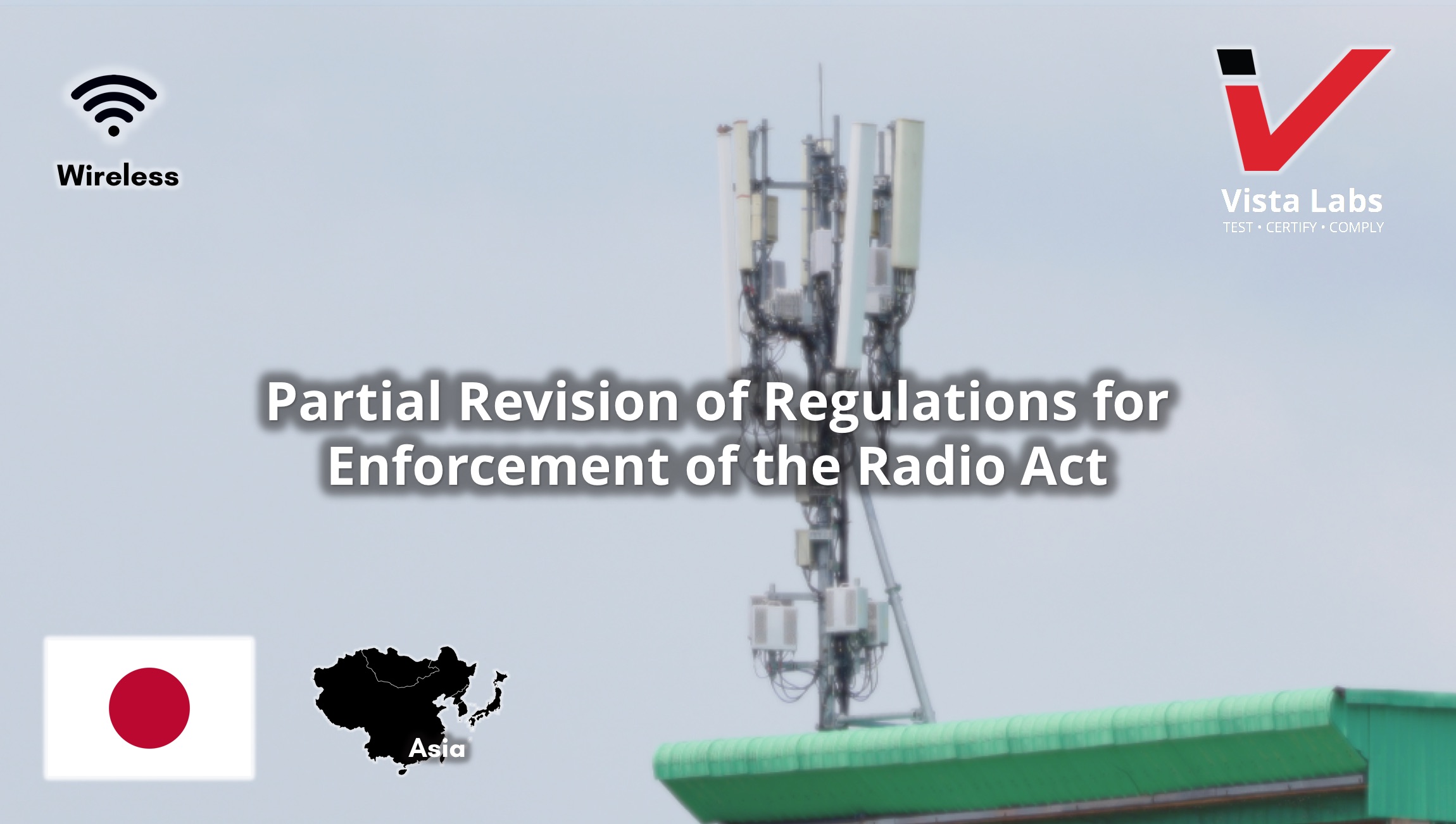The Ministry of Internal Affairs and Communications (MIC) of Japan is proposing an amendment to the ministerial ordinance to enable usage of the 5G system.
Japan will make necessary amendments of technical regulations for the local 5G system to enable various players (ex. SMEs, farmers or local governments) excluding national mobile operators to establish and use private 5G network mainly in their property based on regional or industrial needs.
Amendments to ministerial ordinance:
- Regulations for Enforcement of the Radio Act
- Regulations for Radio Equipment Concerning Technical Regulations Conformity Certification of Specified Radio Equipment
Technical requirements of the local 5G system:
| Item | Description |
|---|---|
| Frequency band | 28.2 GHz – 28.3 GHz |
| Communication System | TDD |
| Multiplexing and Multiple access method | (1)Base Station: OFDM/TDM (2)Mobile Station: OFDMA/SC-FDMA |
| Modulation method | (1)Base Station: QPSK/16QAM/64QAM/256QAM (2)Mobile Station: π/2-BPSK/QPSK/16QAM/64QAM/256QAM |
| Allowable deviation of occupied band width | (1)Base Station: 50 MHz / 100 MHz (2)Mobile Station: 50 MHz / 100 MHz |
| Allowable deviation of frequency | (1)Base Station: ≦± (0.1 ppm+12 Hz) (2)Mobile Station: ≦±0.105 ppm |
| Antenna Power | (1) Base station: ≦5 dBm/MHz (outside), ≦0 dBm/MHz (inside) (2) Mobile station: Maximum of Rated antenna power ≦ 23 dBm |
| Allowable deviation of Antenna Power | (1) Base Station: ≦Rated antenna power ±5.1 dB (2) Mobile Station: ≦Rated antenna power + 3.6 dB |
| Allowable deviation of absolute antenna gain | (1) Base Station: ≦23 dBi (2) Mobile Station: ≦ 20 dBi |
| Spurious emission | Appendix 1 |
| Spectrum Mask | Appendix 2 |
| Adjacent channel leakage ratio | Appendix 3 |
| Secondary Radiated Emission Strength | Appendix 4 |
Appendix 1(Spurious emission):
(1) Base station
| Frequency bands | Limit value | Measurement bandwidth |
|---|---|---|
| 30 MHz – 1,000 MHz | -13 dBm | 100 kHz |
| From 1,000 MHz to less than twice from the top frequency excluding between 25.5 GHz and 31.0 GHz | -13 dBm | 1 MHz |
(2) Mobile station
| Frequency bands | Limit value | Measurement bandwidth |
|---|---|---|
| 6 GHz – 12.75 GHz | -30 dBm | 1 MHz |
| From 12.75 GHz to less than twice from the top frequency | -13 dBm | 1 MHz |
Appendix 2(Spectrum Mask):
(1) Base station
| Frequency offset, f_offset (MHz) | Spectrum Mask | Measurement bandwidth |
|---|---|---|
| 0.5MHz≦f_offset < 0.1 bandwidth +0.5MHz | -2.3 dBm | 1 MHz |
| 0.1bandwidth+0.5MHz≦f_offset | -13 dBm | 1 MHz |
(2) Mobile station
| Frequency offset, f_offset (MHz) | Spectrum Mask (dBm)/Channel BW | Measurement bandwidth |
|---|---|---|
| ± 0 MHz – 5 MHz | 50 MHz: 1.5 dBm 100 MHz: 1.5 dBm | 1 MHz |
| ± 5 MHz – 10 MHz | 50 MHz: -6.5 dBm 100 MHz: 1.5 dBm | 1 MHz |
| ± 10 MHz – 100 MHz | 50 MHz: -6.5 dBm 100 MHz: -6.5 dBm | 1 MHz |
| ± 100 MHz – 200 MHz | 50 MHz: N/A 100 MHz: -6.5 dBm | 1 MHz |
Appendix 3(Adjacent channel leakage ratio):
(1) Base station
| Channel bandwidth | Absolute/relative | Frequency detuning | Limit | Measurement bandwidth |
|---|---|---|---|---|
| 50 MHz | Absolute value | 50 MHz | -10.3 dBm/MHz | 47.52 MHz |
| Relative value | 50 MHz | -25.7 dBc | 47.52 MHz | |
| 100 MHz | Absolute value | 100 MHz | -10.3 dBm/MHz | 95.04 MHz |
| Relative value | 100 MHz | -25.7 dBc | 95.04 MHz |
(2) Mobile station
| Channel bandwidth | Absolute/relative | Frequency detuning | Limit | Measurement bandwidth |
|---|---|---|---|---|
| 50 MHz | Absolute value | 50 MHz | -35 dBm | 47.52 MHz |
| Relative value | 50 MHz | -10.7 dBc | 47.52 MHz | |
| 100 MHz | Absolute value | 100 MHz | -35 dBm | 95.04 MHz |
Appendix 4(Secondary radiated emission strength):
(1) Base station
| Frequency bands | Limit value | Measurement bandwidth |
|---|---|---|
| 30 MHz - 1,000 MHz | -54.5 dBm | 100 kHz |
| 1,000 MHz - 12.75 GHz | -44.3 dBm | 1 MHz |
| From 12.75 MHz to less than twice from the top frequency excluding between 25.5 GHz and 31 GHz | -36 dBm | 1 MHz |
(2) Mobile station
| Frequency bands | Limit value | Measurement bandwidth |
|---|---|---|
| 6 GHz - 20 GHz | -36.8 dBm | 1 MHz |
| 20 GHz - 40 GHz | -29.8 dBm | 1 MHz |
| Over 40 GHz less than twice from the top frequency | -13.9 dBm | 1 MHz |
The final date for comments on this proposed update is 9/17/2019.
This update will enter into force December of 2019.



